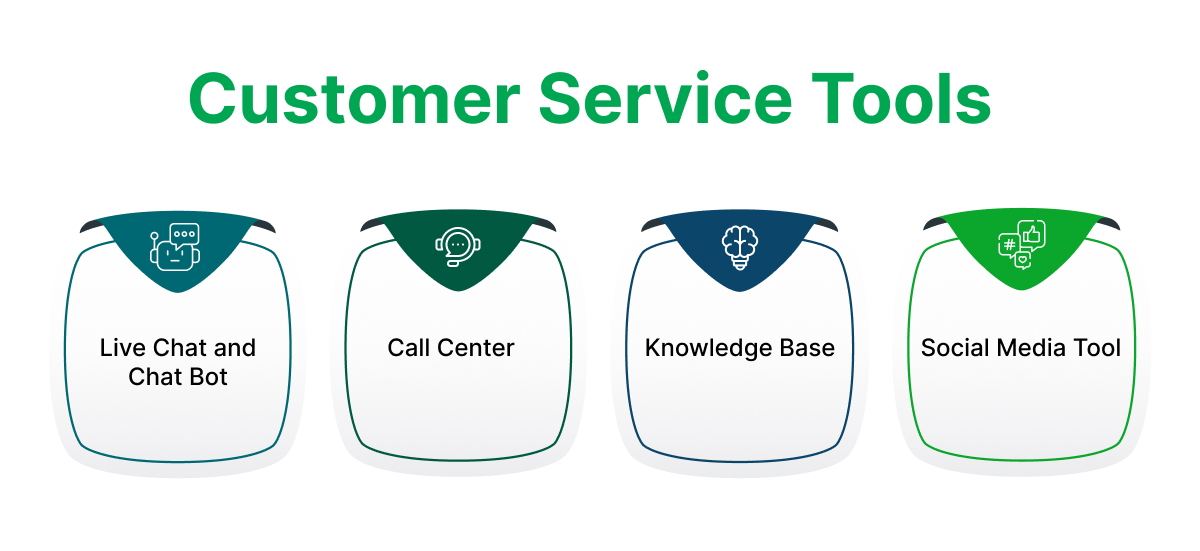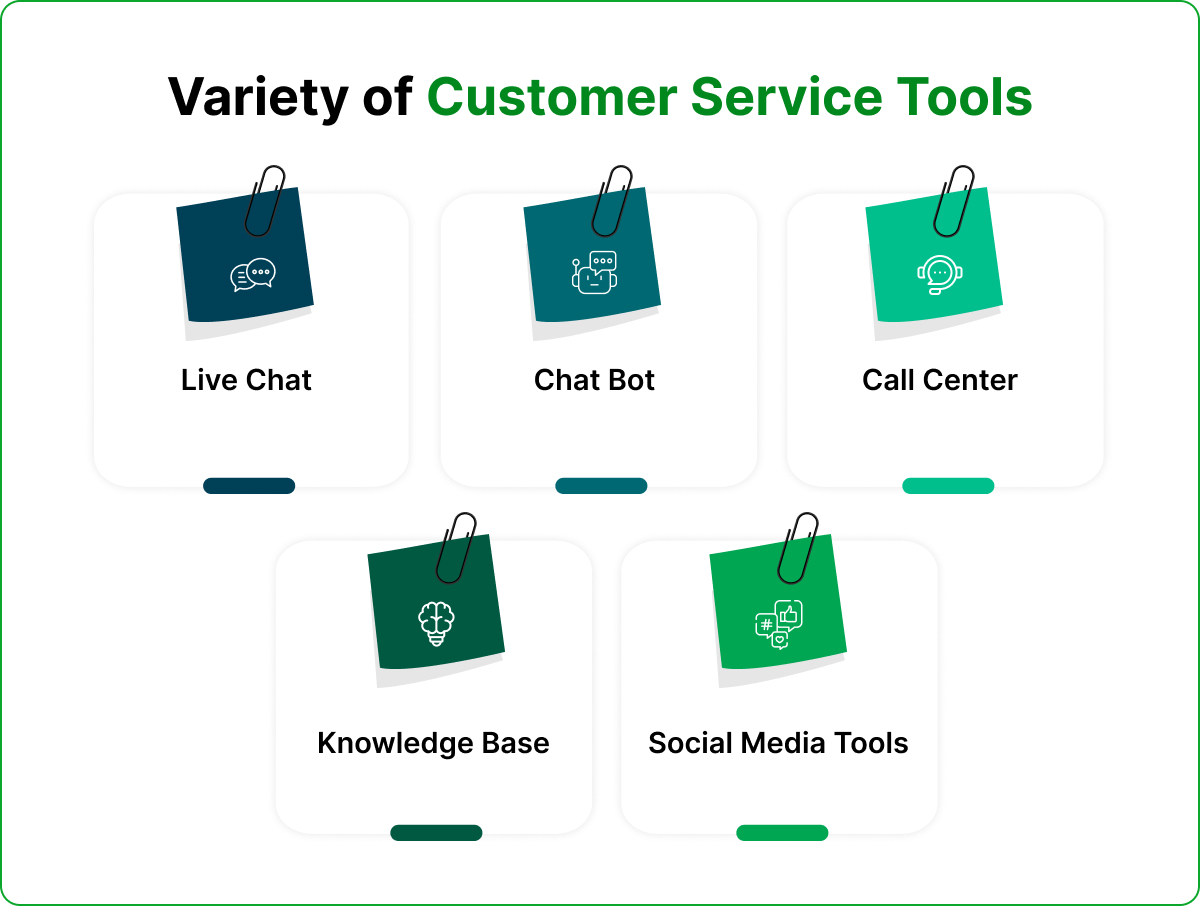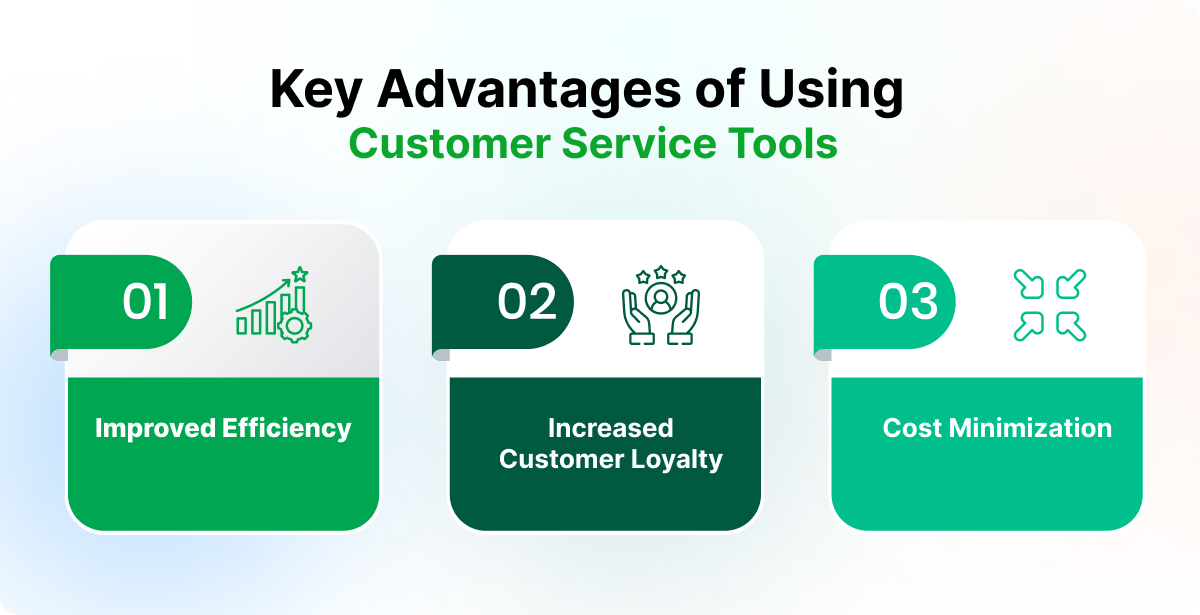 Customer Support
Customer Support

04 March, 2023

Welcome to the age of customer-centricity! From pre-sales to after-sales support, consumers demand top-notch service at every touchpoint. It directly navigates their buying behavior. As a business owner, when you are aiming for efficiency and flawlessness, hiring heads can lead you to dead ends. The best customer service tools can rather ensure the worth of your investment.
The top customer service priority worldwide for 2024 was increasing customer satisfaction, with nearly 80 percent of customer service leaders who stated this as their answer. Reducing customer service response time was somewhat further down in the list of top customer service priorities, with 54 percent of respondents who claimed this was their top priority for 2024. Source: Statista
As you come to this end, you are likely looking to give the right answer to your customers at the right time. And know that you are in the very right place to win the keep-them-happy game. Let’s unwrap the resounding charisma of technology!
Contents
You can think of customer service tools as a dynamic arsenal of strategies, technologies, and processes that enable businesses to engage with their customers in a meaningful and efficient way. These tools serve as the bridge between businesses and their customers, facilitating communication, resolving issues, and building long-lasting relationships. They are the secret weapons that empower businesses to exceed customer expectations and create exceptional experiences that foster loyalty and growth.

The answer to what are customer service tools will be complete for you only when you get hands-on experience with them. So let’s get familiar with them.

When you are up for studying customer service tools and software, you will find this one is like having a personal assistant. Whenever you need assistance, you simply click a button on the website or app, and you’re instantly connected to a real person who can help you in real time.
Chatbots are like having a super-smart robot on standby to answer your questions and help you out. They can quickly and efficiently handle many routine tasks, such as answering frequently asked questions or processing orders, without the need for human intervention.
A call center is like a distinctive department where a team of highly skilled agents works together to tackle any customer issue. Customers can call in with their inquiries or problems and the agents are on standby on the other side of the telephonic media to answer them. They can handle a wide range of customer issues, from simple questions to complex technical problems. They often work as a third party and represent the company that outsources them.
You can think of a knowledge base as a digital library filled with answers to all of the questions customers might have. Businesses can create this online catalog, which customers can access at any time and from anywhere, to learn everything about the product or service; you don’t need a customer support representative to be your guide.
When you enunciate the word “communication,” it leaves an echo that says “social media” these days. To review some of the customer service tools examples, you don’t have to look any further. Facebook, Twitter, and Instagram have made it seem as if customers are chatting with companies like they are with their friends. And the best part is that this conversation can be done from anywhere at any time.
As your business expands, keeping the customer base intact becomes more tiresome. As your business expands, keeping your customer base intact becomes increasingly tiresome. In this situation, there is no alternative except to automate the means of communication with them. Let’s see what exchanges it has in store for you.

Customer service tools can help automate tedious tasks, so your team can focus on the issues that need a human touch. You literally don’t have to worry about the response time for common inquiries and the schedule for routing tickets.
This kind of automation can take care of 24/7 support, allowing businesses to offer assistance beyond regular business hours. Imagine the relief of customers when they can get the help they need, no matter the time of day! Not only that, but these tools are also compatible with personalizing support. Businesses can afford tailored offers, solutions, and recommendations to individual customers. Integrating these elements can help you enhance the customer experience, building loyalty in the process.
By automating tasks and streamlining workflows, businesses can reduce labor costs and increase productivity. Its analytics allows businesses to make data-driven decisions and improve their processes, ultimately reducing costs associated with inefficient practices. Moreover, by responding efficiently to customer inquiries, companies can save the amount of time customers spend on hold, thus reducing the cost of customer support.
Choosing the right one can be tricky when there are multiple options for online customer service tools. You should aim to give the best experience to your customers within your own affordability.
Start with the small needs that must be met. Find answers to these questions for a jumpstart.
At the outset, you need to create a budget that is aligned with your business goals and financial resources. The pricing models of customer service tools for small businesses and large enterprises are likely to be different; review them in terms of the needs of your business. Calculate the potential return on investment (ROI) of each tool to determine its overall value.
At the end of the day, it’s all about making sure the customer receives the support they need. Your support team must be content with what it takes to use digital customer service tools. Look for user reviews and feedback on different sets of tools. Take advantage of any free trials or demos offered. Evaluate whether they are easy to learn and use or require extensive training and onboarding.
It is very promising that these tools are gaining user adaptability over time. Not to mention social media customer service tools, online shopping has become a fun game. Moreover, with the rise of remote work and the need to provide support from anywhere, anytime, these tools are creating more inevitabilities. To stay ahead of the game, you need to get up to speed with this tech-savviness!